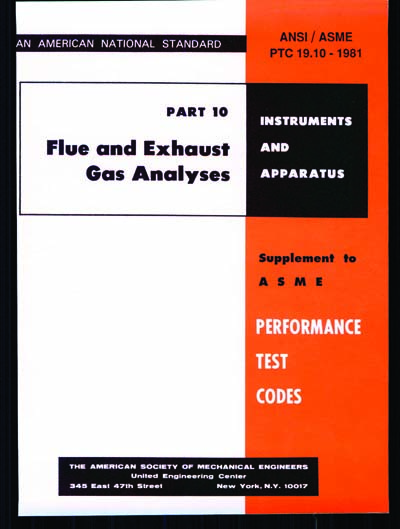Most recent
ANSI/ASME PTC 19.10-1981
Flue And Exhaust Gas Analyses
Presented are descriptions of methods, apparatus, and calculations which are used in conjunction with Performance Test Codes to determine quantitatively, the gaseous constituents of exhausts resulting from stationary combustion sources. The gases covered by this PTC Supplement are oxygen, carbon dioxide, carbon monoxide, nitrogen, sulfur dioxide, sulfur trioxide, nitric oxide, nitrogen dioxide, hydrogen sulfide, and hydrocarbons. Stationary combustion sources include steam generators, gas turbines, internal combustion engines, incinerators, etc. Many methods are available for measuring the constituents in flue and exhaust gases. This PTC Supplement describes in detail the most commonly used instrumentation and analytical procedures used for flue and exhaust gas analyses. Included are instrumental methods as well as (normally, wet chemical) methods. The instrumental methods include instruments used for non continuous or continuous sampling using extractive samples and in-situ type instruments that require no sampling system.
Content Provider
American Society of Mechanical Engineers [asme]






